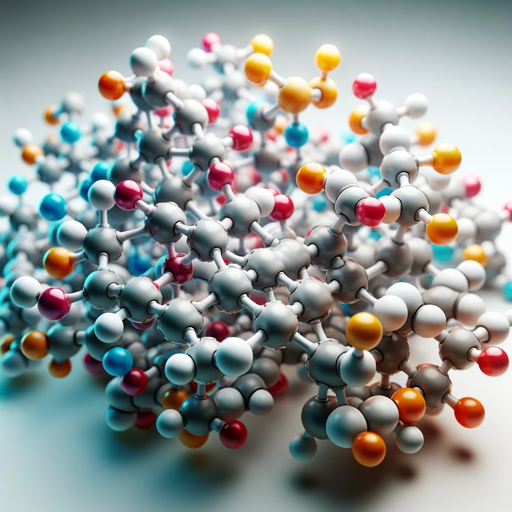Phenomenology of Particle Physics-physics insights and tools
AI-powered particle physics analysis
Explain the Higgs mechanism
What are quarks and leptons?
Discuss the role of CERN in particle physics
How do neutrinos oscillate?
Related Tools
Load More
Undergrad Physics GPT
I'm an AI tutor specializing in undergraduate physics, here to explain concepts and solve problems.

Graduate Level Physics GPT
Expert in advanced physics, insightful and precise
Professor Phy.
Your Personalized Physic Tutor. Upload an Image or Type Your Question to Begin. Create an account at nerd-notes.com to supercharge your learning with Phy.

Quantum Mechanics
Navigate the quantum realm with an expert guide, unraveling mysteries with clarity and insight.

Gödel's Phenomena Analyst
An inquisitive researcher linking mysteries to science. Member of the Hipster Energy Team. https://hipster.energy/team

Personal Math Messiah GPT
Physics Sage - BIG TOE Unifying Theories
20.0 / 5 (200 votes)
Introduction to Phenomenology of Particle Physics
Phenomenology of Particle Physics (PhenoPP) focuses on bridging the gap between theoretical models in high-energy particle physics and experimental observations. It aims to test, refine, and develop models that can describe or predict phenomena observed in particle physics experiments. PhenoPP uses tools like Feynman diagrams, Monte Carlo simulations, and effective field theories to interpret data from colliders, neutrino detectors, or cosmic rays, providing insight into fundamental questions such as the nature of dark matter, neutrino masses, and the origins of the matter-antimatter asymmetry in the universe. For example, phenomenologists might use effective field theory techniques to explore possible extensions of the Standard Model by analyzing data from the Large Hadron Collider (LHC) at CERN.

Main Functions of Phenomenology of Particle Physics
Connecting Theory and Experiment
Example
Phenomenologists develop models that can predict the outcomes of particle collisions at the LHC.
Scenario
A phenomenologist might propose a new particle interaction model based on supersymmetry (SUSY) and use Monte Carlo event generators to simulate how these interactions could be observed in proton-proton collisions at the LHC.
Effective Field Theories
Example
Effective field theory (EFT) is used to describe low-energy phenomena by integrating out high-energy degrees of freedom.
Scenario
In studying neutrino oscillations, phenomenologists use EFT to model neutrino interactions at energy scales accessible to current experiments, while also considering potential new physics from higher energy scales.
Data Interpretation and Parameter Fitting
Example
PhenoPP interprets data from particle detectors to refine theoretical models.
Scenario
After the discovery of the Higgs boson, phenomenologists worked to determine its properties (mass, spin, couplings) by comparing experimental data with predictions from the Standard Model and beyond-standard theories.
Ideal Users of Phenomenology of Particle Physics
Theoretical Physicists
Researchers developing or testing new theoretical frameworks, such as supersymmetry or extra dimensions, rely on phenomenology to see how their models could manifest in experiments. They benefit from PhenoPP by getting insights into which models are viable based on existing or upcoming experimental data.
Experimental Physicists
Physicists working with particle accelerators or detectors use phenomenology to design experiments, interpret results, and optimize detector sensitivity. They rely on PhenoPP to understand how theoretical models can be tested within experimental constraints and how to set parameters for simulations.

How to Use Phenomenology of Particle Physics
Visit aichatonline.org for a free trial without login, also no need for ChatGPT Plus.
This provides open access to the tool without subscription barriers, making it easy for anyone to explore the capabilities of Phenomenology of Particle Physics.
Gather all relevant materials and questions
Ensure you have a clear goal for your session, whether it's for research, problem-solving, or learning.
Ask precise and detailed questions
The more detailed your questions, the more relevant and specific the answers will be. This tool is designed to provide in-depth explanations and support nuanced understanding.
Use mathematical tools if required
The platform offers support for complex calculations and mathematical formulations, including series expansions, Dirac delta functions, and group theory.
Review output and cross-check with sources
Make sure to compare results with current literature or known data, especially for experimental or theoretical discussions. The tool is useful for cross-referencing complex phenomena.
Try other advanced and practical GPTs
Minecraft Expert
AI-powered Minecraft assistance for all.

英语词汇老师Alice
AI-powered tool for mastering English vocabulary.

AI 绘画
AI-powered cartoon creation tool.

IT Manager Advisor
AI-driven solutions for IT managers.

Prompt Enhancer
Enhance Your Prompts with AI Power

普通免許試験一発合格
AI-powered tool for driving test prep

Future Predictor
Predicting Tomorrow with AI

Organic Chem Scholar
AI-powered tool for mastering organic chemistry.

C Code Mentor
AI-powered C programming assistant

Coder Copilot GPT
AI-powered coding support for developers.

英语长难句分析
AI-powered English sentence breakdown tool

短视频爆款文案大师
AI-Driven Content for Social Media Success

- Research Assistance
- Quantum Mechanics
- Mathematical Tools
- Collider Physics
- Symmetry Analysis
Five Q&A About Phenomenology of Particle Physics
What is Phenomenology of Particle Physics used for?
It is designed to assist with understanding and analyzing the fundamental behaviors of particles, such as their interactions, symmetries, and experimental signatures. The platform is useful for both academic research and practical application in high-energy physics.
How does this tool aid in theoretical research?
By providing access to complex mathematical tools, group theory representations, and knowledge about standard model particles, it helps researchers explore quantum field theories, gauge groups, and higher-order calculations.
Can I use it to calculate Feynman diagrams?
Yes, the tool offers resources to compute higher-order diagrams, including Feynman integrals, Wick rotations, and various regularization techniques for loop integrals.
How can it help with particle physics experiments?
The tool provides support for interpreting experimental results, such as limits on neutrino masses from neutrinoless double-beta decay and dark matter searches.
Is there support for Monte Carlo simulations?
Yes, Phenomenology of Particle Physics includes basic Monte Carlo techniques to generate events and explore distributions relevant to particle physics phenomena.